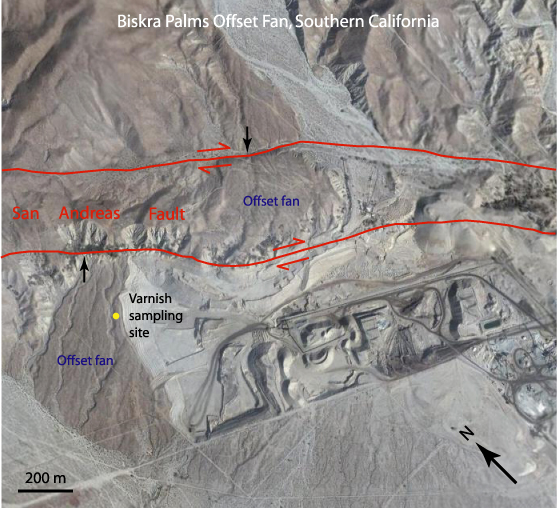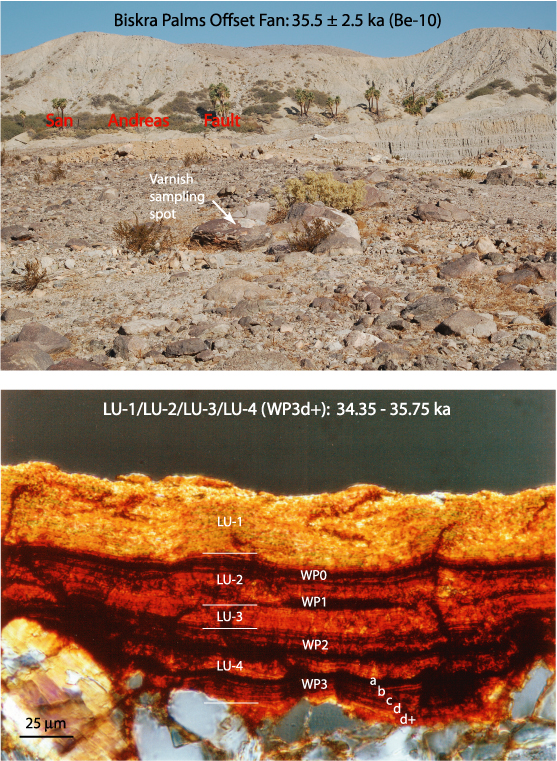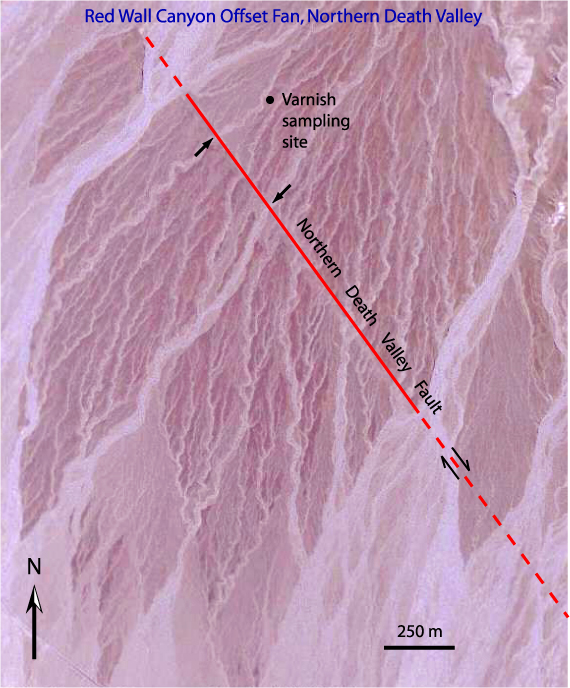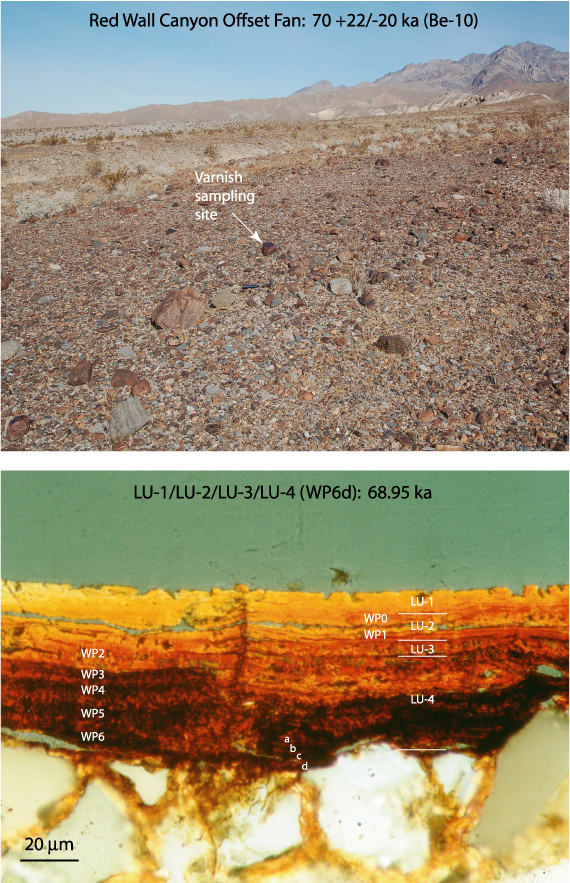


Figure Caption: High-resolution satellite image of a tectonically offset alluvial fan along the San Andreas fault near Indio Hills, southern California (upper panel) and VML age estimate (lower panel) for the abandonment of the offset fan surface (middle panel). The VML age estimate of 34.35 - 35.75 ka for the offset fan is based on a tentative correlation of millennial-scale wet events recorded in varnish microstratigraphy and cold events recorded in the GISP2 ice core record (please click here to see the climatic correlation). Note that such VML age estimate is nearly identical to the previously derived cosmogenic 10Be age of 35.5 ± 2.5 ka for the same offset fan (van der Woerd et al., 2006). Given an accumulative lateral displacement of 565 ± 80 m along the San Andreas fault (between two piercing points marked by two dark arrows; van der Woerd et al., 2006), this suggests a long-term slip rate of about 16 mm/yr along the fault.


Figure Caption: High-resolution satellite image of a tectonically offset alluvial fan along the Northern Death Valley fault in southern California (upper panel) and VML age estimate (lower panel) for the abandonment of the offset fan surface (middle panel). The VML age estimate of 68.95 ka for the offset fan is based on a tentative correlation of millennial-scale wet events recorded in varnish microstratigraphy and cold events recorded in the GISP2 ice core record (please click here to see the climatic correlation). Note that such VML age estimate is nearly identical to the previously derived cosmogenic 10Be age of 70 +22/-20 ka for the same offset fan (Frankel et al., 2007). Given an accumulative lateral displacement of 297 ± 9 m along the Northern Death Valley fault (between two piercing points marked by two dark arrows; Frankel et al., 2007), this suggests a long-term slip rate of about 4.3 mm/yr along the fault.